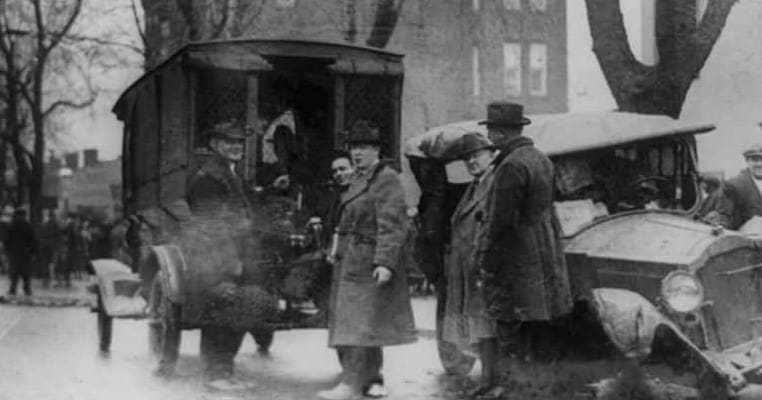The term “bootlegger” covers a wide field of activities which delivered illicit alcohol to the public which refused to accept government-mandated temperance. Bootleggers smuggled liquor across borders and into coves and inlets of America’s coast. They delivered demon rum to suppliers in the towns and cities, and to consumers in the form of speakeasies and individuals. They brewed beer, ran distilleries, and fermented wine. They dealt with cops on the make and cops on the take. They delivered to hidden bars, the mansions of society, dark alleyways, and warehouses where the liquor was secretly stored.
In the large cities, they gradually banded together in groups to protect themselves from the federal agents of the Treasury Department and the local authorities which couldn’t be bought, as well as from other bootleggers that encroached on their territory. They lived in constant danger of arrest, blackmail, physical attack, and murder. Their daily existence depended on where they were on the supply chain which moved illegal alcoholic beverages from their sources to their consumers. There is significant debate over how the term bootlegger evolved, but it remains in use, applied to stolen software, video and audio recordings.

Here are some examples of how life was for a bootlegger during the Roaring Twenties when the prohibition of the manufacture and sale of alcoholic beverages was the law of the land.

Getting started
Prohibition put a lot of people out of work, and not only those who had previously worked in the breweries and distilleries and their legitimate distribution chains. Bars closed down and restaurants found their income from sales significantly reduced. Bartenders and waiters found themselves out of work, looking for another means of supporting themselves and their families. They knew who among their former customers would be likely new customers for illegal booze. The purveyors of illegal alcohol sought them out to be both salespeople and distributors.
At the same time, their former customers approached them in many instances with inquiries as to where alcohol could be obtained. Connecting customers to suppliers was one of the first steps in the widespread flaunting of the law which marked the 1920s. Before prohibition went into effect, forward-thinking investors, many of them already involved in illegal gambling and other vices, had acquired large stocks of alcohol and secreted it in various locations. The former waiters and bartenders, who knew where the customers were, put them together with suppliers.
They were paid a percentage of sales, and prices in the early days of prohibition were high since the liquor being sold was of the same quality as it had been in the days before it was illegal. The business was quickly profitable for the bootleggers, but as the supply of quality liquor began to dwindle as demand steadily increased other means of producing alcoholic beverages were needed. Hidden distilleries producing grain alcohol developed in cities, and the moonshine whiskey of Appalachia came into high demand since it could be readily cut in proof and sold profitably to a growing list of customers.

